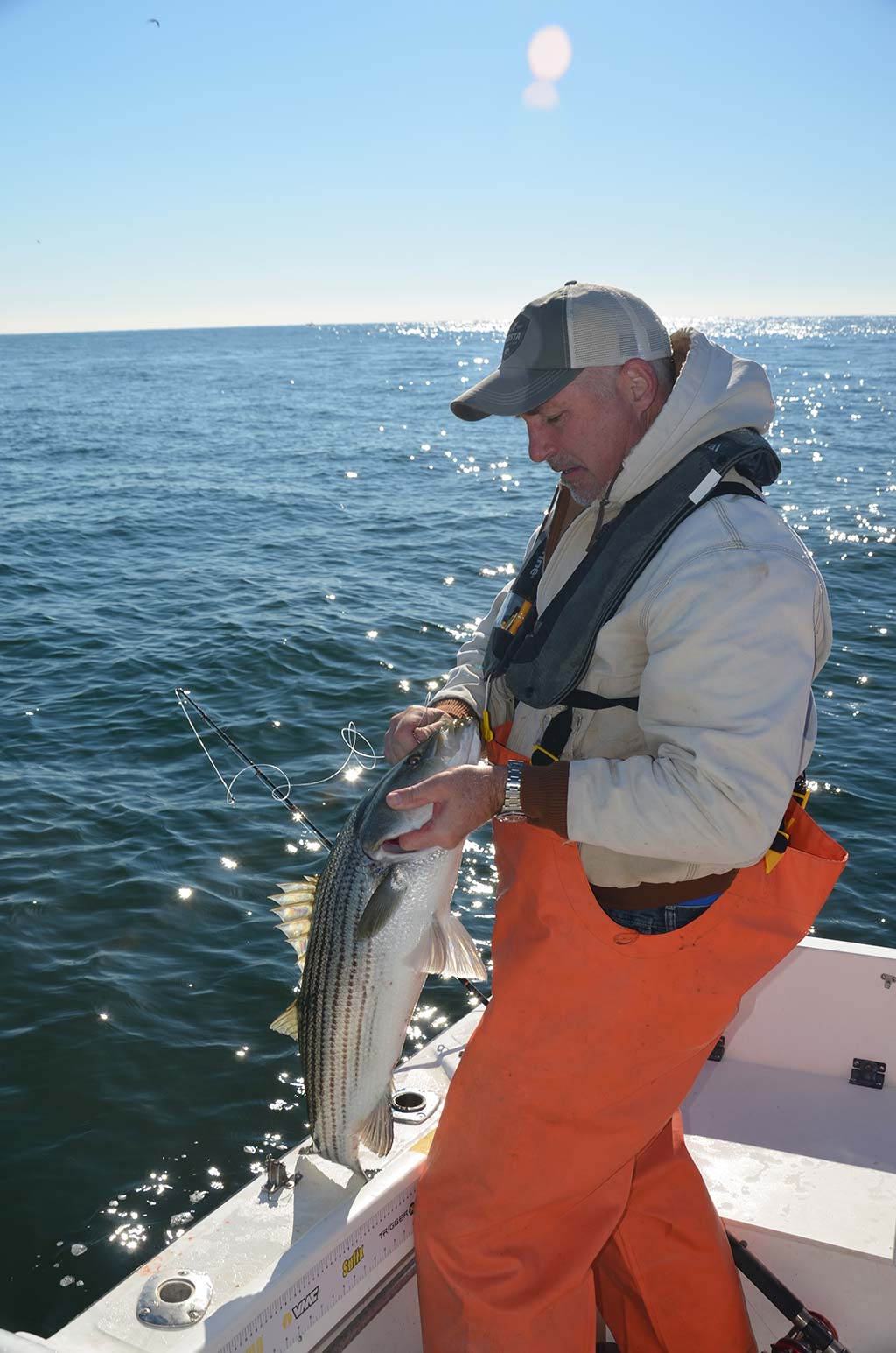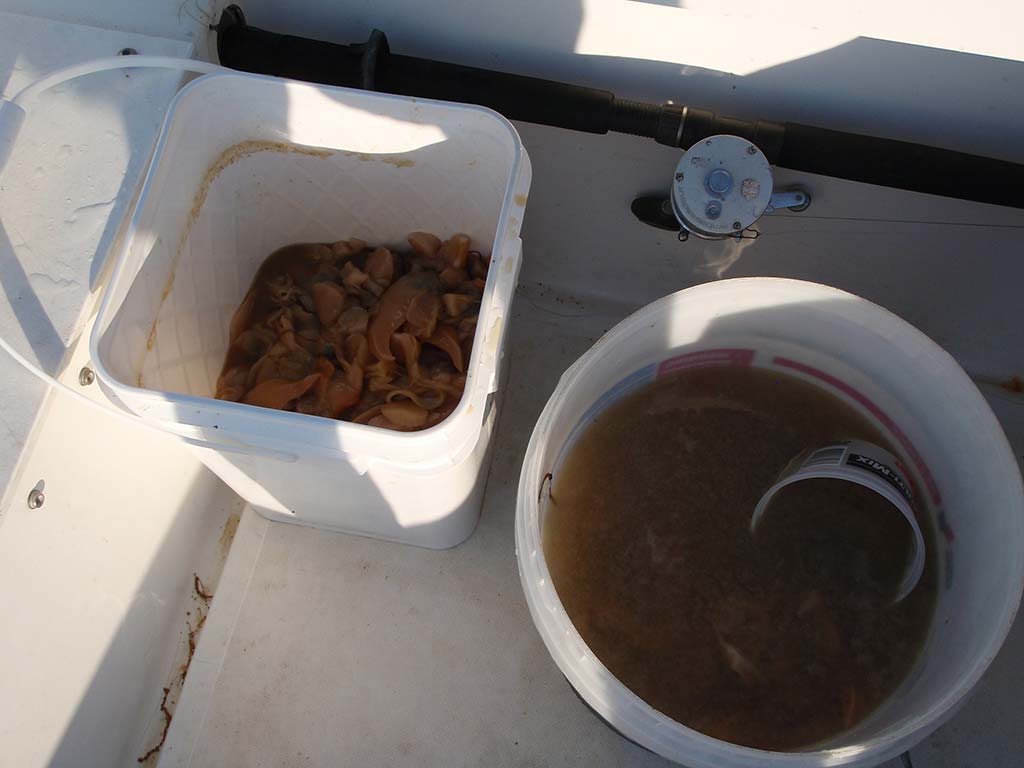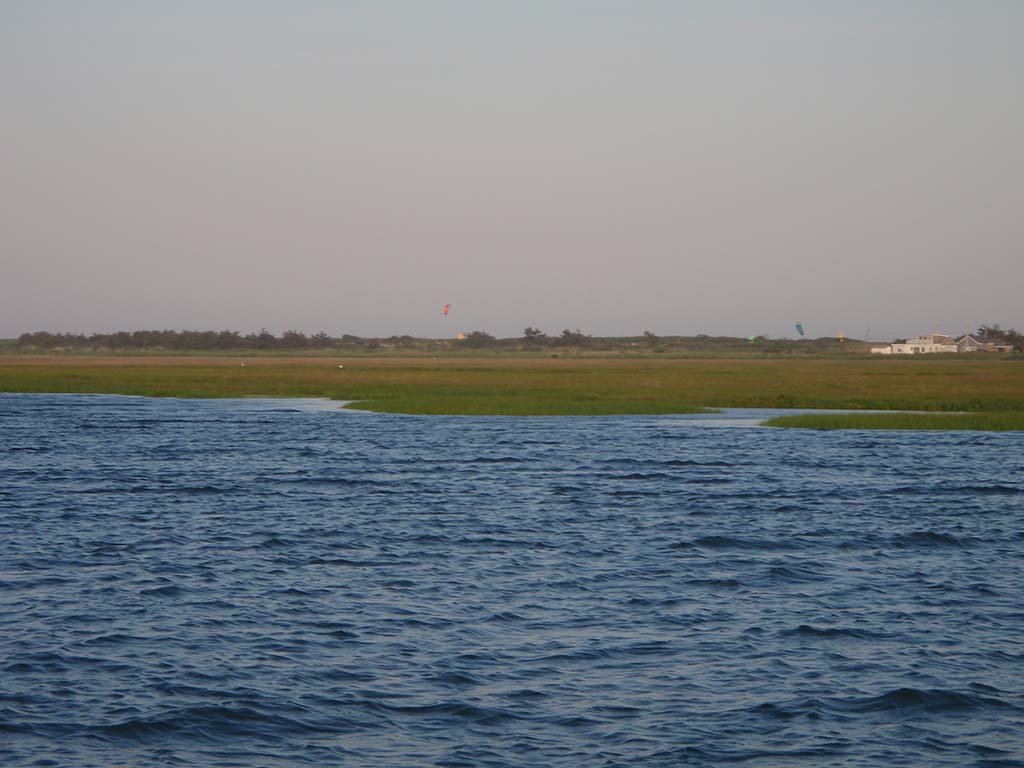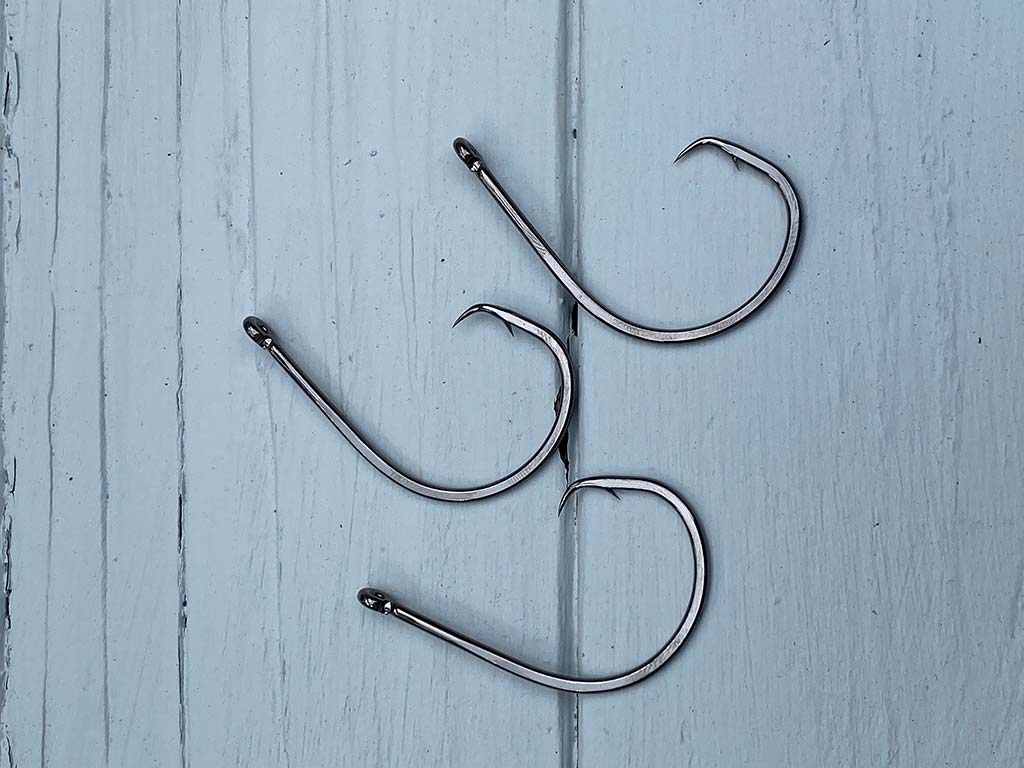
If you want to change things up, give old fashioned bellying for bass a shot.
There are a ton of methods to catch striped bass. You can live-line spot, kingfish, bunker and eels, chunk bunker, utilize bunker spoons on the troll, cast soft plastics to bridge abutments, and so on. There is one method though that is fun, will draw a lot of fish to the net, and also, if done right, will produce an easy supply of slot-size fish. What I’m referring to is clam bellying for bass. Before we get going, clam bellying for bass does not mean you buy some fresh clams, anchor up, and three-way rig a hunk of clam, and fish the bottom and wait. I am talking about the “art” of clam bellying the old fashioned way. Anchor up, get the slick going, and drift back the bellies on circle hooks.
Thinking back to the first time I clam bellied was around the age of 12, and was fishing with Scott Simons (one of the early editors of The Fisherman). On that trip, I remember catching bass, but also remember being the ‘chum and squeeze’ boy.
Clam bellying relies on getting bass into the feeding mood, then keeping them there for some time, or even an entire tide. This may sound like an impossible task, but if you do it right, it works well.

Feed ‘Em & Keep ‘Em
There are three ingredients needed to keep bass within “your” slick. The first is you need to get them there. This is accomplished by slowly ladling out the “slurry” which is saltwater added to your belly can. After anchoring up tide from a bridge, sod bank, or channel edge, dump a ladle of slurry into the tide every 30 seconds, or so. Every now and then grab a couple bellies and squeeze the juices out, into the water, this will only sweeten your slick, drop the occasional belly into the slick too, this really gets them feeding. The third step is to keep them there, when you see fish swirling in the slick, increase the numbers of squeezed and drifted bellies you’re adding, if you keep it up, those fish will not leave. This is when you begin slowly free-lining a baited circle hook back to the fish. It usually doesn’t take long to hook up.
I recently spoke with Capt. Tom Cornicelli of Back Bay Outfitters. Tom has clam bellied and clam chummed for bass and always did quite well. Tom feels that one of the keys is being patient, but also being impatient. On the patient side, you need to work the slick and bellies, but on the other hand, if no fish bite, you need to set up in a different part of the bridge, creek mouth, or channel edge.
Just remember, clam bellying for bass is not rocket science. It requires a simple set-up on the chum, bait, and gear end, then moving (if necessary) until you find fish.

Rigged & Ready
Clam bellying produces stripers of all sizes, depending on the time of year, location, and area. If for instance if it was mid to late June into July in the Great South Bay, larger fish could be encountered at any time. If it was early April or May, a lot of smaller fish can be found. For the summer months you could see a good mix, then once fall arrives, watch out as the big girls will easily succumb to a well-placed belly.
I use two different 7-foot Penn Rods for clam bellying. The first is a Penn Battalion II rated for 15- to 30-pound mono, matched to an Abu-Garcia 7000C and the second is a slightly lighter Penn Battalion rated for 12- to 20-pound mono matched to an Abu 6500C with a power handle. Both reels are spooled with 20-pound test mono. I like the mono as it floats, and has some give to it when a fish grabs the bait. For hooks, I use Gamakatsu inline circles in size 5/0. The hooks are tied to a 24-inch leader with a barrel swivel at the other end to curtail line twist. If you’re encountering larger fish, don’t be afraid to step up to the same rig with a 7/0 hook.

Dole Out The Bait
Okay, we have the gear, let’s catch some fish. And believe it or not, this is the easy part. The idea is to get your baited clam to drift like the rest of the free-drifting bellies in the slick. Presentation is key here.
Simply hook the clam and slowly free line the bait back towards the slick. Bass will be set up facing the current, and holding at a drop-off, the mouth of a small creek near the sod banks or bridge piling. You want to allow your bait to drift to the point of ambush and a little bit farther. If you don’t get bit, reel it in and start over. If you are fishing with several buddies, spread out your presentation. Remember, you want your bait to appear as natural as possible, and to emulate the chum. Let one line out, wait 15 seconds or so, let the second, wait for 15, let a third. In between reeling back in, someone also must squeeze a clam to keep it going. The process requires teamwork with a bit of rhythm. If done correctly, you will see success.
Clam bellying bass can be effective on either side of the tide and throughout the season. If you want to change things up, give old-fashioned bellying for bass a shot. I am sure you will come away with few fish, if not a lot of fish on certain tides. Remember, new this year is the required use of circle hooks when targeting stripers, and they must be inline circles, not offset.


